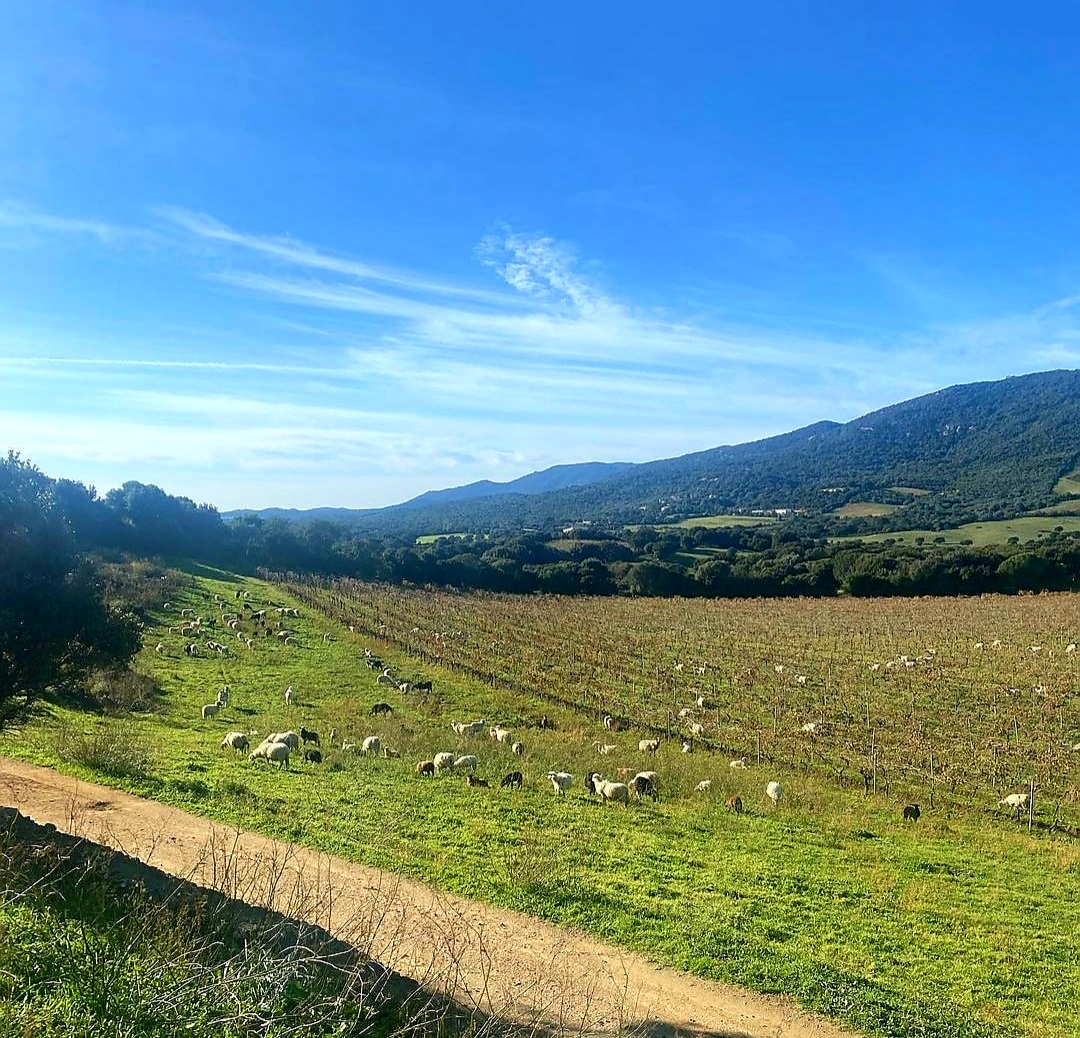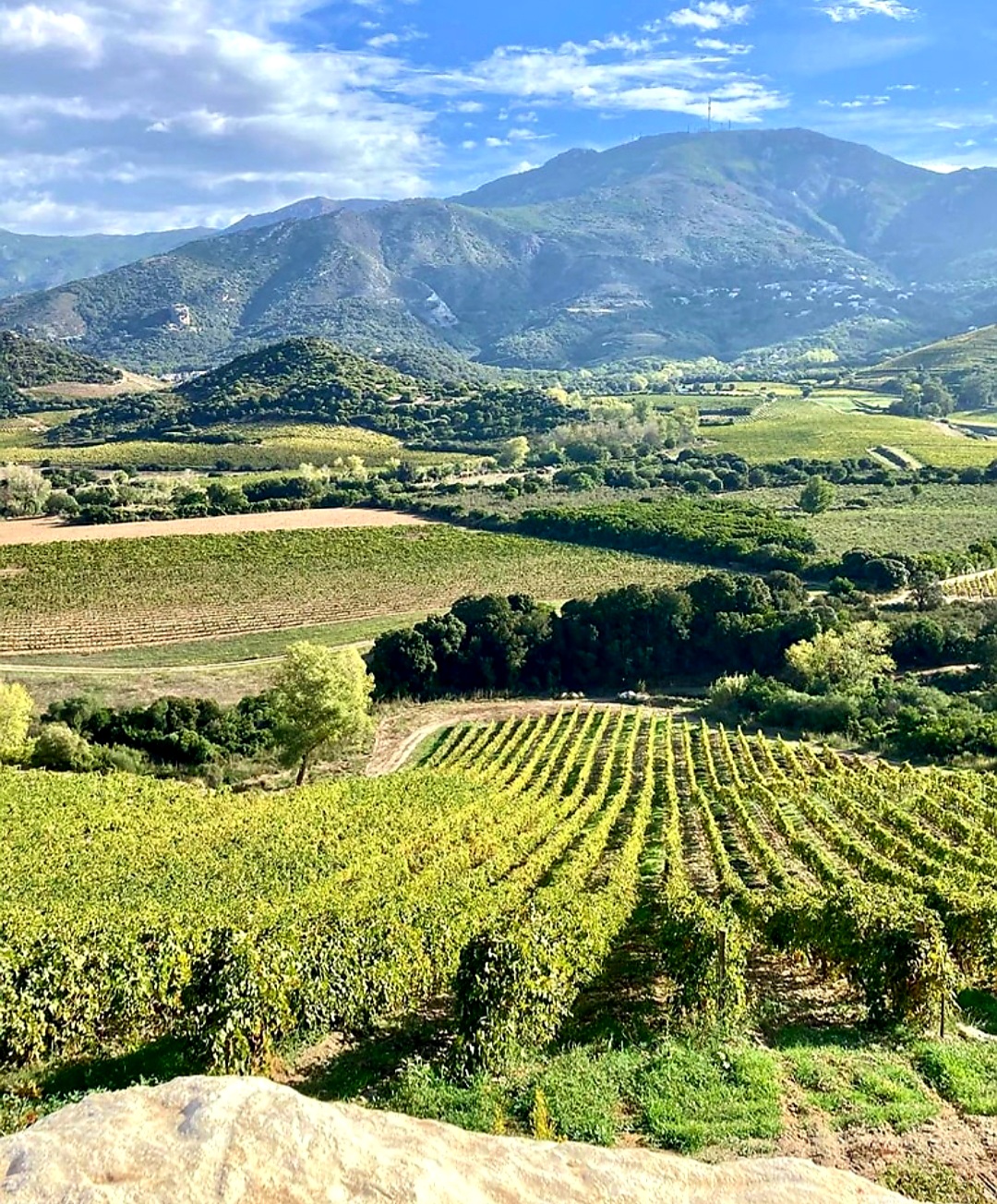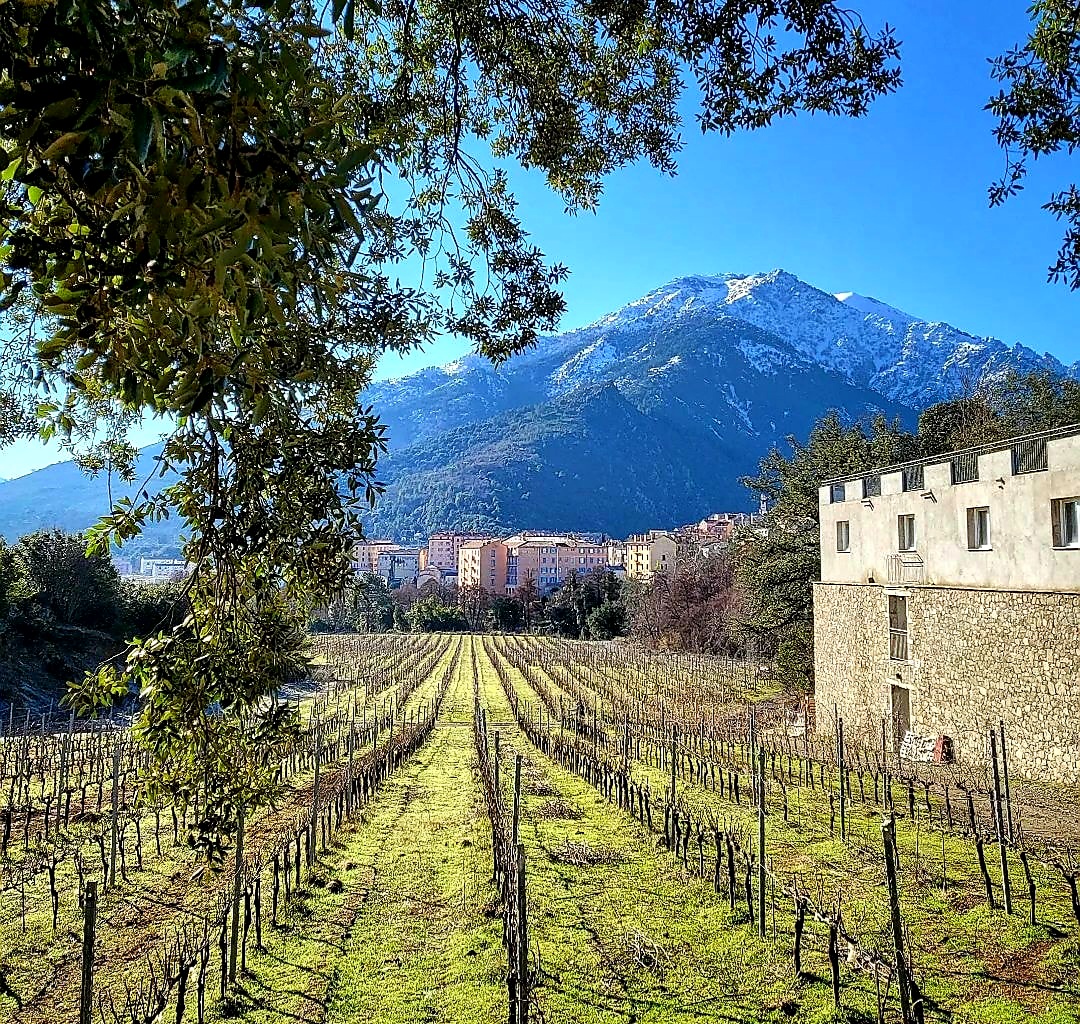The culture of the vine and wines of Corsica is millennia long (2,600 years) and is an integral part of the history of the island.
In the 1950s and 1960s, a first generation of ampelographers and winemakers became aware of the importance of native vines. The collection of Domaine de Vassal on the Continent (1959) and Domaine Comte Abbatucci (1966) houses the first native vines that may have been harvested on the Island.
Twenty years later, a generation of young winemakers realized the need to enhance an incomparable ampelographic heritage that is today appreciated throughout the world.
Corsica is divided into four large geological regions:
Western Granitic Corsica occupies two thirds of the island and extends across the entire high mountain range with granitic terrain. Its richness in silica, alumina, potash and sometimes calcium gives the wines great finesse mixed with intense and floral aromas.
Eastern Alpine Corsica does not exceed 1700 metres. Often rich in calcium carbonate, the limestone slabs of the North-West and South create fantastic white cliffs and give rise to round, fleshy wines with mineral, floral and fruity notes.
Ancient western Corsica occupies 2/3 of the island. Its soils, rich in silica, potassium and sometimes calcium, are very favorable for vines. They give wines of great distinction, light colors, brilliance, intense aromas and often with aging a “flint” bouquet.
The East Coast is made up of foothills, hills and small plateaus composed of tertiary and alluvial deposits. The clayey soils guarantee softness and harmony to the wine.
Thanks to the influence of the sea and mountains, the vineyards enjoy a Mediterranean climate suitable for high quality grapes. One of the constants of the Corsica climate also lies in the exceptional amount of sunshine, with an average of 2,885 hours of sunshine per year. However, the presence of numerous reliefs allows for high rainfall, as well as the cross influence of the Mistral of Provence, the Libeccio of Gibraltar or the North-West Tramontana.
Regular sea and land breezes influence the climate. The sea breeze blows fresh air from the sea from 9:00 to 19:00. It affects vine treatments which must be carried out before 9.00 am or after 6.00 pm. The sea breeze can be quite strong (but not the land breeze). The land breeze blows the air coming down from the mountains. During the night the land cools faster than the sea and the air becomes cooler. It starts a few hours after sunset and continues to blow 2 to 3 hours after sunrise until temperatures balance between land and sea.
Corsica is home to 33 grape varieties. The typicality of Corsican wines has its roots in the deep soul and in the adequacy with the island of these native vines. In this refined mosaic, six stand out, recognized as the most widespread in Corsica: Niellucciu, Sciaccarellu, Vermentinu, Aleaticu, Biancu Gentile, Muscat petits grains.

©VINS DE CORSE- Clos Canarelli
The classification of wines in France is represented in three main categories: Protected Designation of Origin (AOP), Protected Geographical Indication (PGI) and Wines Without Geographical Indication (VSIG). The AOP, established in 1935, constitutes a sign of identification of quality and origin. The Corsican vineyard has 9: 1 regional denomination: Vini Corsi, 2 Cru denominations: Patrimonio and Ajaccio, 5 Village denominations: Corsica Porto-Vecchio, Corsica Figari, Corsica Sartène, Corsica Calvi and Corsica Côteaux du Cap Corse and 1 sweet wine denomination Natural: Moscato del Cap Corse.
AOP CORSE COTEAUX DU CAP CORSE
Most of the terroir is made up of shale soils. With its typically Mediterranean climate, mild winters and hot summers give the wines finesse and elegance.
The structure of the red wines is strengthened by cultivation on terraces and by the very significant exposure of the vines to the sun. As for the whites, always very renowned, they combine aromatic finesse and floral notes, completed by a very beautiful minerality.

©VINS DE CORSE- Clos Canarelli
AOP PATRIMONIO
Patrimonio is the first Corsican denomination to be recognized at a national level. The geological quality of the soil offers a remarkable range of wines. The reds are sumptuous, powerful and persistent on the palate. Dry whites are subtle and elegant. Finally, the rosés are fresh although a little more full-bodied, but always with the crunchiness of the fruit. Most of the winemakers at AOP Patrimonio practice organic farming and the vineyard is in the process of becoming entirely organic.
AOP MUSCAT DU CAP CORSE
The vineyards of this AOP, cultivated in Cap Corse and in the Nebbiu region, produce naturally sweet, delicate, aromatic wines with a color that can vary from light yellow to amber. Marked by notes of candied fruit, citrus peel or even beeswax for some, their dominant characteristics are complexity and elegance.
AOP CORSE
The AOP Corsica, the only “Regional” type denomination, extends over the entire eastern coast, between Bastia and Solenzara. The vineyards are planted on the plain (the only one on the island), behind rocky ridges that rise to over 1000 metres.
AOP CORSE PORTO-VECCHIO
Porto-Vecchio is located between a rocky coast and a wooded environment where the largest cork groves on the island are found. The Niellucciu and Sciaccarellu vines combine with the traditional Grenache to give rise to round and elegant reds and fine and aromatic rosés. The whites, from Vermentinu, are dry and fruity enough.
AOP CORSE FIGARI
The AOP Corsica Figari is the oldest vineyard in Corsica, where the first vines appeared as early as the 5th century BC. This land, the southernmost and sunniest in France together with Bonifacio, is characterized by a harsh and very windy climate which makes viticulture complex. White wines have exotic notes, lively and colorful rosé wines while red wines are well structured and deep in color.
AOP CORSE SARTÈNE
In the heart of a mountainous landscape, the soils are predominantly granite. White wines are light, rosés not very colorful but very fruity, and red wines are soft, delicious and spicy.
AOP AJACCIO
As a Patrimonio, the AOP Ajaccio benefits from the “Cru” type designation, elevating it to the rank of the most recognized designations in Corsica. Sciaccarellu, a typical Corsica vine, is born here. King of the denomination, the AOP Ajaccio specification requires a minimum percentage of 60% of this vine which gives the reds and rosés their strong character. The reds are characterized by intense aromas and the rosés by fruity notes. The whites, dominated by Vermentinu, have a floral distinction.
AOP CORSE CALVI
Located in Balagne, between Calvi and Île Rousse, the AOP Corsica Calvi is one of the oldest terroirs. This AOP is one of the five “Villages” type denominations together with Sartène, Figari, Porto-Vecchio and Côteaux du Cap Corse. With its heritage, the Calvi vineyard saw the birth of the Balagne wine known to the Romans, as well as the Algajola and Reginu wines bred by the Benedictine monks. Today, 100% of the appellation’s farms are certified organic or have begun converting to organic farming. Rosés are renowned for their clarity. The whites, very aromatic, reveal notes of citrus fruits. The reds, quite full-bodied, stand out for their strong character.








